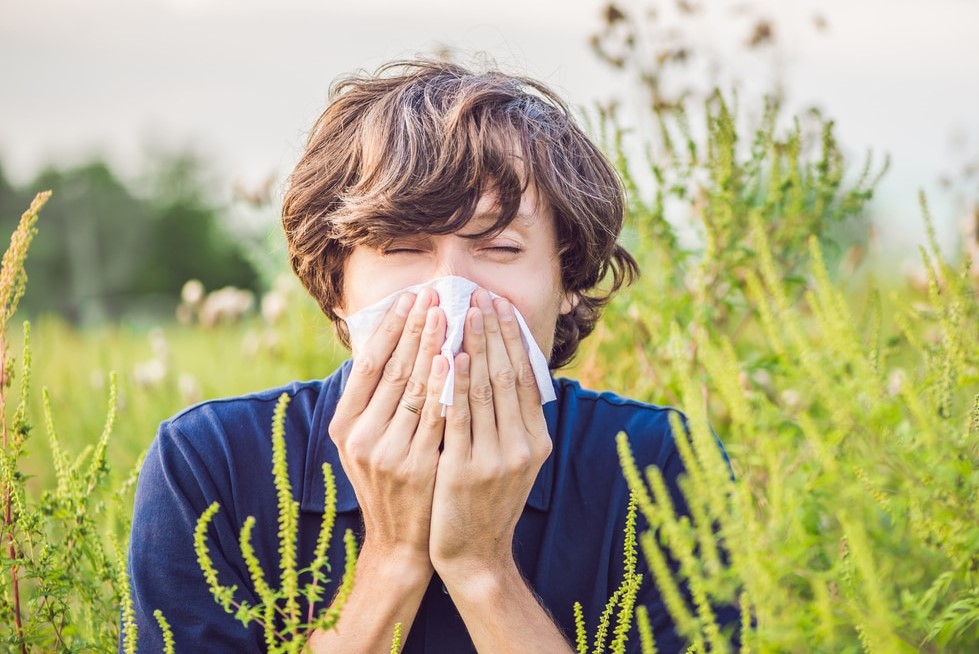
It's spring, pay attention to allergy symptoms
With spring, many people begin to experience allergy symptoms that can be bothersome and affect their quality of life
What is Allergy?
Allergy occurs when the immune system responds abnormally to normally harmless substances, producing antibodies against them capable of inducing the typical symptoms of allergic diseases.
Allergy symptoms involve various organs and tissues, including the lower respiratory tract, skin, mucous membranes of the nose and eyes.
When the allergen comes into contact with these antibodies (immunoglobulin E, IgE), an immune reaction occurs which causes the release of chemical mediators, such as histamine, responsible for allergic symptoms, which can range from mild irritation to develop anaphylaxis, a severe allergic reaction that can be life threatening.
Spring, what are the main causes of allergies?
Allergies are caused by an excessive immune system response to the presence of allergens that are harmless to most people.
Allergens can be:
- in the air, such as pollen, animal dander, dust mites and mold;
- in several types of foods, such as eggs, milk, fish, shellfish, peanuts, tree nuts, wheat, and soybeans;
- drugs;
- the venom released by the stings of insects such as bees and wasps.
In addition, other potential substances such as latex and nickel can also trigger allergic reactions.
Spring allergy: why the phenomenon is on the rise
The increase in allergies in Western and industrialized countries can be linked to the so-called “hygienic theory”: according to this theory, the improvement of hygienic conditions in the first years of life causes the immune system to be less exposed to infectious agents, leaving more room for the immunological mechanisms underlying allergies (including the production of immunoglobulin E) in genetically predisposed patients.
Epidemiological studies have shown that, in rural areas, children are exposed from birth to antigens with potential infectious agents, resulting in a normal immune response to pathogens.
On the contrary, the immune system of people with a genetic predisposition from industrialized countries tends to produce antibodies (IgE in fact) which are not directed towards infectious agents, but rather towards harmless substances such as pollen and dust mites.
Spring, the most common allergies
The most common cause of seasonal allergies are pollens and in particular those of:
- Birch
- olive
- grasses
- parietarian
- ambrosia
The olive tree is a common tree in the Mediterranean area, already in mid-spring.
Pollens from grasses are present from March to June both in the Mediterranean and in the Po and mountain areas.
Those of parietaria are prevalent in the Mediterranean areas where they tend to be present for many months of the year, while ragweed pollen is mainly confined to the northern areas of the country and has a late pollination period (between August and October).
What are the symptoms of spring allergies?
Regardless of the allergen causing spring allergies, the symptoms remain the same.
In most cases, symptoms such as:
- rhinitis
- conjunctivitis
- asthma (characterized by shortness of breath, difficulty breathing, dry cough, feeling of tightness in the chest)
Allergy visit and allergy tests
Even adults who have never had spring allergies can start to suffer from them and the symptoms could be mistakenly attributed to a common cold.
To accurately identify the allergen that causes the allergy, it is necessary to carry out an allergy visit, so that the allergist can identify the most appropriate tests, such as allergy tests, for example.
The Prick Test is the simplest, fastest method and represents the first level allergy test.
The allergen extracts are placed on the forearm and a small puncture is performed: this allows the allergen proteins to come into contact with the skin.
In case of allergy, a reaction similar to a mosquito bite will be visible.
If this type of test is not feasible, for example if the patient takes antihistamines or when the subject has particularly reactive skin, blood tests can be used to search for specific IgE class antibodies.
How to cure a spring allergy?
Traditional pharmacological therapy involves the use of antihistamines which are usually administered in the form of tablets.
Today, antihistamines are available that cause fewer side effects, such as drowsiness.
In combination with antihistamines, it is possible to use topical cortisone-based nasal sprays, which reduce the inflammation caused by the allergy without the typical side effects of oral cortisone, which should instead be avoided.
Furthermore, to obtain a long-term solution, it is possible to undertake specific immunotherapy.
Once the allergens responsible for the reactions in the patient have been identified, the allergist can evaluate the controlled administration of the allergen itself, for a prolonged period, generally at least six months a year, for at least three years.
This therapy, which is often referred to as an “allergy vaccine”, allows the patient to gradually lose sensitivity to pollens, avoiding the need to take drugs.
Read Also
Emergency Live Even More…Live: Download The New Free App Of Your Newspaper For IOS And Android
Insects Allergies: A General Overview
Anaphylaxis And Allergies, Adrenalin Auto-Injectors: A Complete Guide
Allergies To Stinging Insects: Anaphylactic Reactions To Wasps, Polistines, Hornets, Bees
Anaphylactic Shock: What It Is And How To Deal With It
Wasp Sting And Anaphylactic Shock: What To Do Before The Ambulance Arrives?
Anaphylactic Shock: Symptoms And What To Do In First Aid
Adverse Drug Reactions: What They Are And How To Manage Adverse Effects
Symptoms And Remedies Of Allergic Rhinitis
Anaphylactic Shock: What It Is, Symptoms, Diagnosis And Treatment
What Is And How To Read The Allergy Patch Test
Allergies: New Drugs And Personalised Treatment
When Can We Talk About Occupational Allergies?
Nickel Allergy: What Objects And Foods To Avoid?
Food Allergies: Causes And Symptoms
How To Cure Allergic Conjunctivitis And Reduce Clinical Signs: The Tacrolimus Study
Bacterial Conjunctivitis: How To Manage This Very Contagious Disease
Allergic Conjunctivitis: An Overview Of This Eye Infection
Allergic Dermatitis: Symptoms, Diagnosis, Treatment


